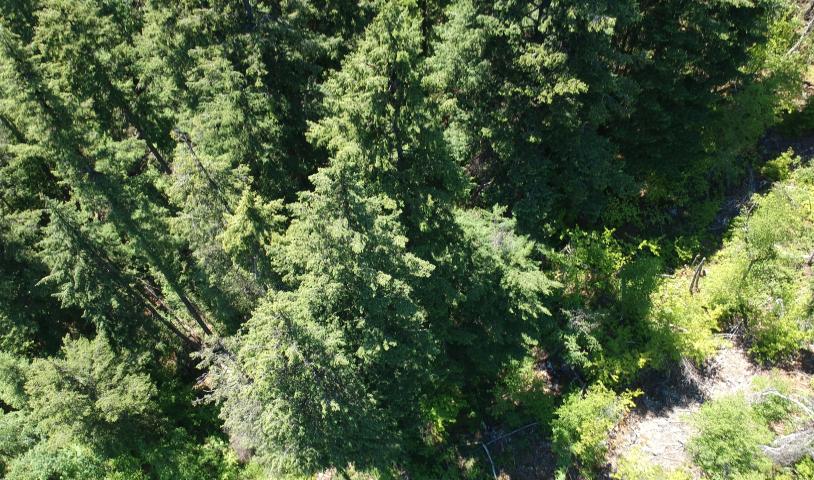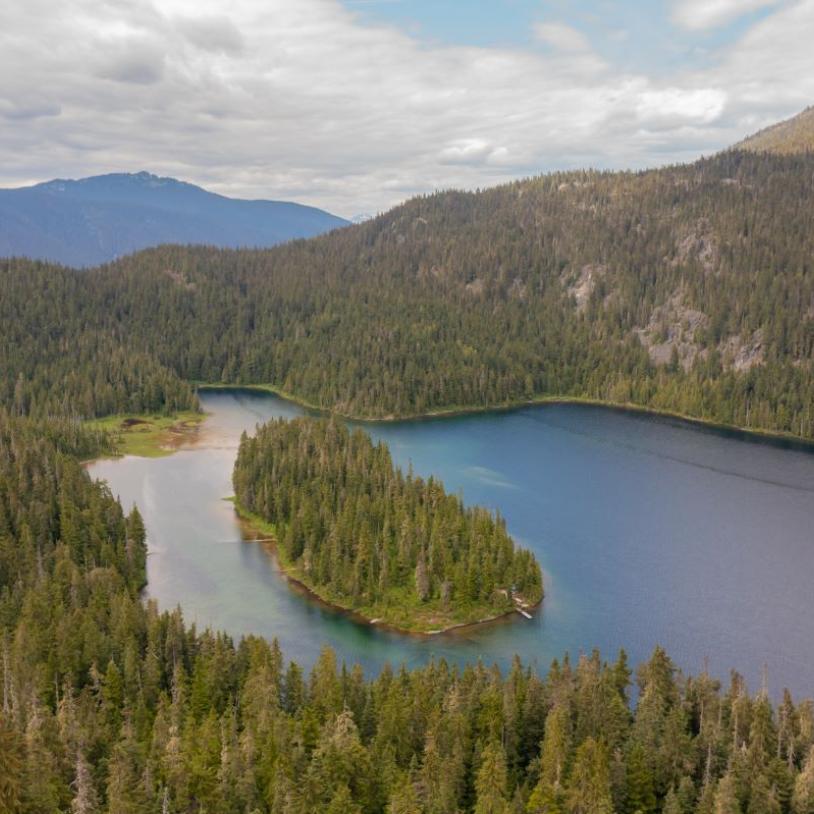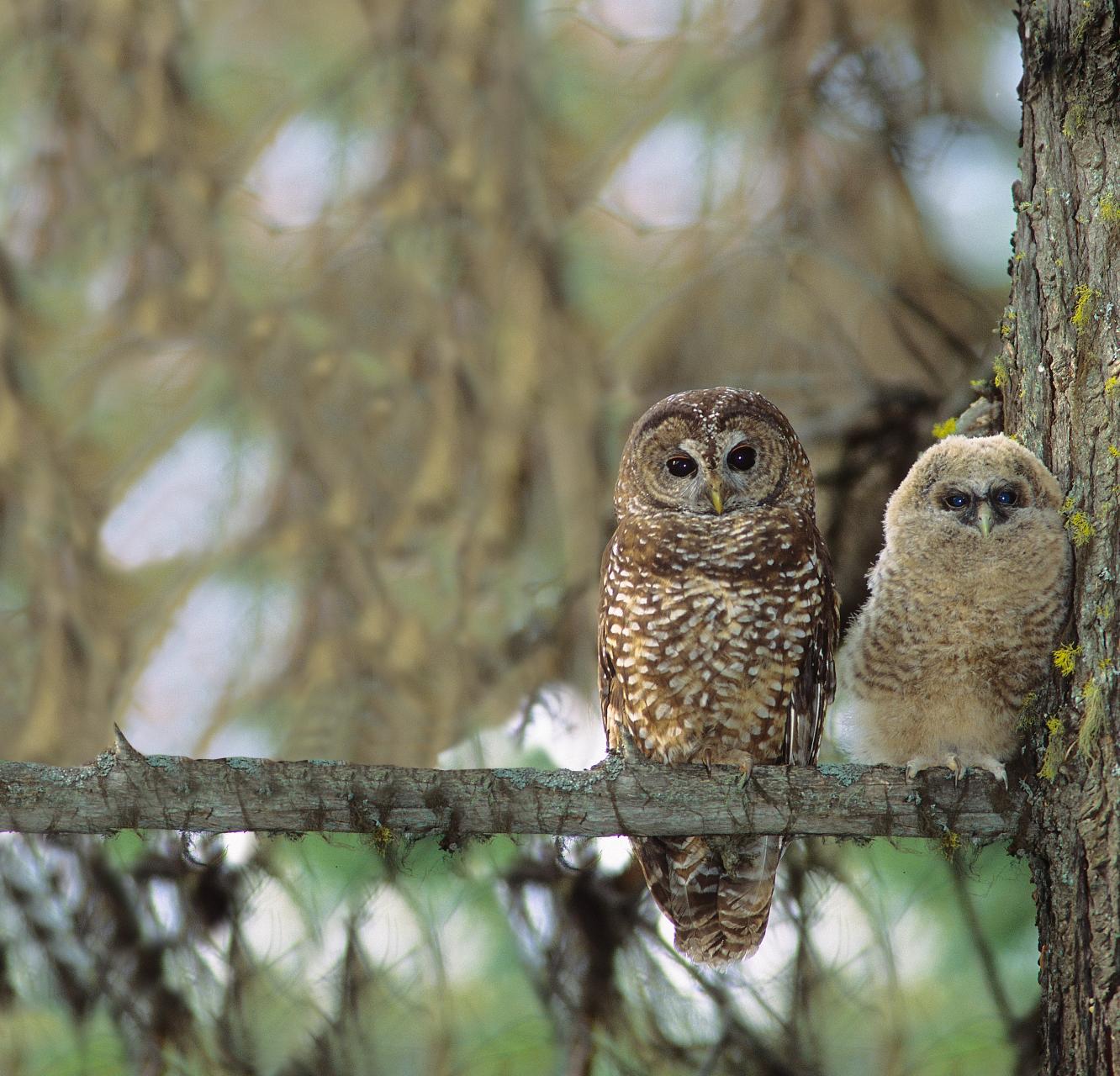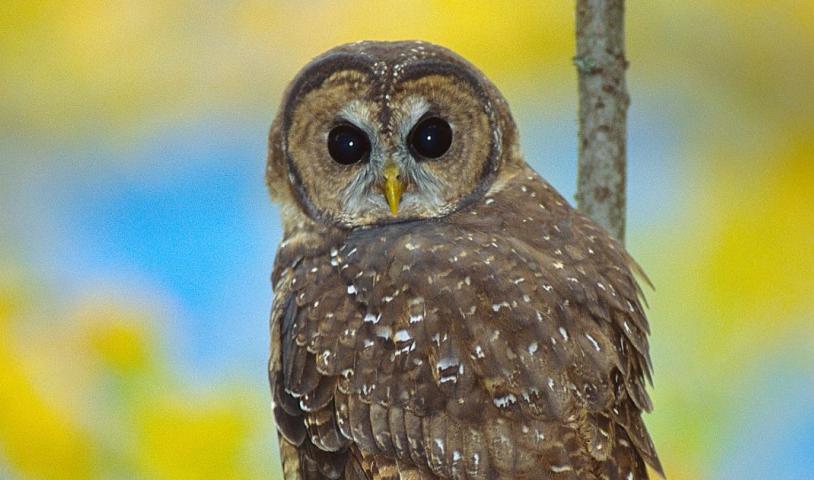Shooting Owls to Save Other Owls: Protecting habitat hasn't stopped the spotted owl's decline. Will shooting its rivals help?
Thursday, July 17, 2014
Photo: Spotted owl habitat
At dusk in a forest along Redwood Creek in northern California, Lowell Diller switches on his digital wildlife caller. The eight-note call of a barred owl breaks the silence. Diller and Riley, his Brittany spaniel, listen for a response. Almost immediately the woods are filled with the deafening, cackling duet of a pair of barred owls, hooting to defend their territory against what they think is a rival.
At this point Diller, a wildlife biologist, usually ends the duet with a blast from his shotgun.
"When I went out to do it the first time, I was shaking, I had to steady myself," he remembers. "I wasn't sure I could actually do it. It was so wrong to be shooting a beautiful raptor like this. It continues to be awkward to this day."
As part of an experiment approved by the U.S. Fish and Wildlife Service (FWS), Diller has killed 92 barred owls in the past five years on lands owned by Green Diamond, the timber company he works for. He's doing it in the hope of saving a closely related species that's an icon for environmentalists: the northern spotted owl.
In 1990, when it was listed as threatened under the Endangered Species Act, the northern spotted owl became the center of a bitter fight between loggers and environmentalists over the protection of its habitat, the old-growth forests of the Pacific Northwest. The FWS estimates that spotted owl habitat has declined by as much as 88 percent since the early 1800s.
Now barred owls, which are larger and more versatile predators, are invading from the east—and forcing spotted owls out.
Diller's owl hunting has been the pilot project for a larger effort that the FWS began last fall: a four-year experiment to kill up to 3,600 barred owls in about 2 percent of spotted owl habitat in Washington, Oregon, and northern California. "The experiment will provide us with the information to decide whether this is a reasonable management tool to maintain spotted owl populations," says Robin Bown, the FWS biologist who's leading the project. "And if so, What are the difficulties and the cost?"
Of Owls and Men
Native to eastern North America, barred owls began moving west around the beginning of the 20th century. They arrived in the range of the northern spotted owl in British Columbia in 1959 and have expand southward since. In many parts of that range they now outnumber spotted owls.
There are several theories about why barred owls moved westward. One theory holds that the treeless expanse of the Great Plains once formed a barrier that the owls couldn't cross. But as people settled the plains, planting trees in urban parks and windbreaks and suppressing fires that kept trees from growing, they created stepping stones for barred owls. The settlers' farms and grain silos also increased the rodent population, providing food for the owls.
According to Diller, the number of barred owls dramatically increased around 2000 in northern California. "Before then they were a novelty," he says. "Every time we would hear one, everyone wanted to go and see it, because they had never seen a barred owl before. Then for the first time we started seeing spotted owl numbers go downhill."
When biologist Eric Forsman of the U.S. Forest Service started studying northern spotted owls in the Oregon Coast Ranges more than 40 years ago, he'd never seen or heard a barred owl. One day last month he returned to an area called Connection Creek, where he'd found his first spotted owl nest in 1972.
Walking through thick brush of vine maple, salal, sword fern, and western dogwood, Forsman leads the way to an old-growth stand dominated by tall Douglas fir, western hemlock, and red cedar. Within minutes, a spotted owl flies in, lands on a tree only a few feet away, and intensely stares at him with dark chocolate eyes. Though they've lost most of their world to logging, "spotted owls are unafraid of humans," Forsman says. "They evolved in dense forest areas of the Pacific Northwest where humans were uncommon."
He walks over to the Douglas fir where the owl and its mate are nesting, and two five-week-old hatchlings can be heard quietly begging for food. "There used to be five or six nesting pairs in the watershed, but now we are down to just two hanging on here," Forsman says.
When he first came here, habitat loss was the main threat to spotted owls. Then in 1994 the federal government adopted the Northwest Forest Plan, setting aside 24.7 million acres (10 million hectares) of spotted owl habitat on public lands. "We thought that if we did a good job of protecting habitat, the spotted owl population would eventually reach equilibrium or even increase, and everything would be fine," Forsman explains.
It hasn't turned out that way. The spotted owl population is dropping by about 3.9 percent a year, and the decline is even steeper in the northern part of the owl's range in Washington, at 7 or 8 percent a year. The evidence is mounting that the barred owl is a big part of the problem.
Better Adapted to Our World
Barred owls can grow more than two feet tall, compared with a foot and a half for spotted owls, and they're more aggressive and more adaptable. They disrupt the nesting of spotted owls, compete with them for food, and chase them out of their territory. "Every time that happens, you have one less pair of spotted owls on the landscape," says Forsman.
A study of the interaction between the two species in western Oregon, led by biologist David Wiens of the U.S. Geological Survey, showed that barred owls nested earlier and more often than spotted owls and produced an average of 4.4 times as many young over a three-year period. Barred owls also require smaller territories because they'll eat almost anything, from rodents to amphibians to crayfish, whereas spotted owls will eat only a handful of species, such as flying squirrels and red tree voles.
"We found that each individual spotted owl was dealing with four or five different pairs of barred owls within its own range," Wiens says.
In the Oregon Coast Ranges the portion of spotted owl territories in which at least one barred owl was detected has steadily increased from one percent in 1990 to 83 percent in 2013. Conversely, the portion of sites in which a spotted owl was found has declined from 88 percent in 1991 to 32 percent in 2013. "Whenever I go in one of those sites where we had spotted owls 30 years ago and I find barred owls up there, there is this incredible sense of sadness," Forsman says.
The Oregon Coast Ranges are among the four test sites where the FWS plans to kill barred owls in a last-ditch effort to save spotted owls.
Ethical Dilemma
Should people be killing one owl to save another?
The advocacy group Friends of the Animals has filed a lawsuit against the FWS, arguing that barred owls are protected under the Migratory Bird Treaty Act. "Killing barred owls is just not a morally acceptable approach to ecosystem management," says Michael Harris, the group's legal director. "It is really micromanaging animals and habitats."
Under the Endangered Species Act, however, the FWS is legally responsible for helping species survive. "We spent 20 years hoping that the two species would work it out," says Robin Bown. "Now we are in a hurry, because we see the writing on the wall."
The FWS hired an ethicist, Bill Lynn of Clark University, to help guide its choices. Lynn concluded that the "lethal removal" experiment is justified because humans destroyed old-growth habitat in the first place and thereby placed spotted owls at a big disadvantage in the battle against the new intruder.
"If we had not been so rapacious with unsustainable logging, we might have seen a very different competitive dynamic between the barred owl and the northern spotted owl," Lynn says. "It is our responsibility to try as best as we can to make up for for the harm we have done in the past."
Forsman remains conflicted. Although he believes the experimental removal is justified from a scientific point of view, he doubts it will work as a management tool. "I don't think we can ever manage barred owls in the long run," he says. "We would have to do it forever. They are here to stay."
In California, Diller is convinced that getting rid of barred owls is the right thing to do. "I don't think we can save spotted owls everywhere, but we can allow them to persist at least in a portion of their range and give them time to adapt to this new threat," he says. "I choose to kill some barred owls so both species can persist, as opposed to doing nothing and allowing the spotted owl to go extinct."
Diller finds comfort in the fact that the experiment seems to be working. Spotted owls, he says, are returning to the sites where he has shot barred owls.





